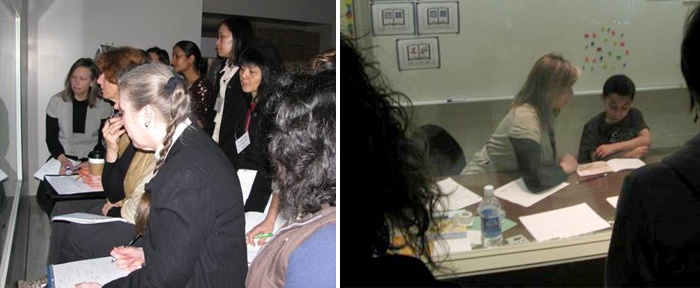Early intervention methods help young readers
Vancouver's elementary schools are embracing early intervention in literacy as a way to dramatically change the futures for students struggling with reading and writing.
At the heart of the early intervention model is the Reading Recovery (Intervention Pr�ventive en Lecture et Ecriture) method. Thirty one elementary schools in Vancouver are using this highly effective short-term intervention programme of one-to-one tutoring for first grade students.
New Zealand educator Marie Clay designed the method to support her research that reading is the process of solving problems to get messages and writing is the process of solving problems to send messages. Clay recognized that early intervention was necessary to helping students improve their literacy skills and develop confidence.
In the program, individual students receive a half-hour lesson each school day for 12 to 20 weeks with a specially trained Reading Recovery teacher. Students begin with books they are familiar with allowing the teacher to observe their strategic activity on continuous text. Each session includes instruction in both reading and writing.
During the early sessions, the Reading Recovery teacher observes the student's reading practices, motivations and possible areas of anxiety. Each lesson is specifically designed to allow the teacher to sort out confusions and areas of anxiety before they become habitual.
Barb McBride, VSB's Reading Recovery teacher leader, explains that the aim of the Reading Recovery method is to develop each child's emerging understanding of the reading and writing process.
"Teachers design a series of lessons to build daily on what a student knows while providing meaning, structure and visual prompts as the child reads. By doing this the teacher is scaffolding the student's reading process and teaching the student how to draw meaning from the text. During daily writing the child is encouraged to use a variety of strategies to expand their writing ability, " said McBride.
"Daily record keeping allows the teacher to follow the child's lead while recording what strategic activity each student has under control and what needs to taught next."
The method has a proven success rate with seventy to eighty percent of all Reading Recovery students accelerating their learning and attain the reading and writing skills expected at the end of first grade.
Val Overgaard, Associate Principal for Learning Services supports the method. "Vancouver teachers and students are proving that the Early Intervention model which includes Reading Recovery is truly a way to ensure that we are focusing our energies to meet the needs of all students."
Reading Recovery is one of the three pillars of Vancouver's Early Intervention model. The second pillar is small group resource support for students who are beginning to fall behind their peers. This instruction takes place in small groups with no more than four students and targeted support is given at least four times a week.
The final pillar is best classroom literacy practice. This classroom instruction is differentiated, through guided reading groups, to meet the needs of individual students.
Each school has also committed to forming an Early Intervention team that meets regularly to discuss the progress of all their students and engage in professional learning with their colleagues.
Training teachers![]()

Reading Recovery teachers observe a live Reading Recovery lesson from behind one way glass.
This year Vancouver opened a new Reading Recovery/IPLE Centre, at Mackenzie Elementary school, to train teachers and to give already trained teachers ongoing professional development.
During these professional development sessions, teachers observe two live Reading Recovery/IPLE lessons taught by their peers, from behind a one way glass.
Led by the Reading Recovery/IPLE teacher leader, the teachers discuss each student's reading and writing activity and relate what they observe to Marie Clay's teaching theories.
